Having an assortment of host and nectar plants is a great way to maximize your potential for butterflies visiting your landscape. Today we’ll let you in on some of Rainbow Gardens’ favorite host plants for the butterflies we see here in San Antonio.
5 Great Butterfly Host Plants for San Antonio
1. Milkweed: Milkweed is an essential butterfly host plant to include in your gardens. It is the ONLY host plant that Monarch butterflies will lay their eggs on, and it is the ONLY host plant that their caterpillar larvae will eat. There are many different varieties of milkweed to choose from and Monarchs will lay eggs on all of them. You get double duty with a plant like milkweed as they are not only host plants but great nectar sources too.
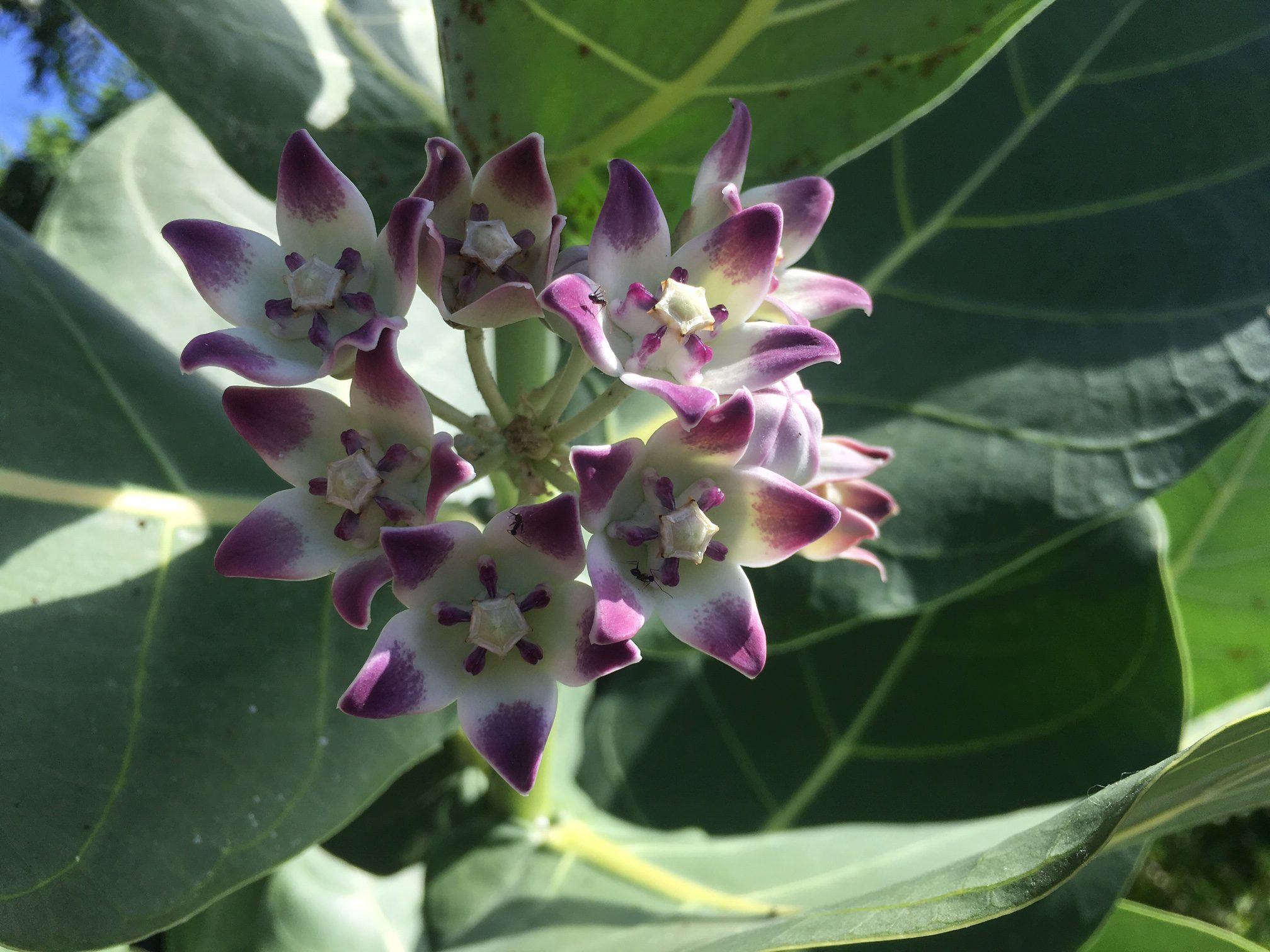

This is the flower of the Giant Milkweed plant. The plant grows like a small shrub or tree, with much larger leaves to accomodate more caterpillars.
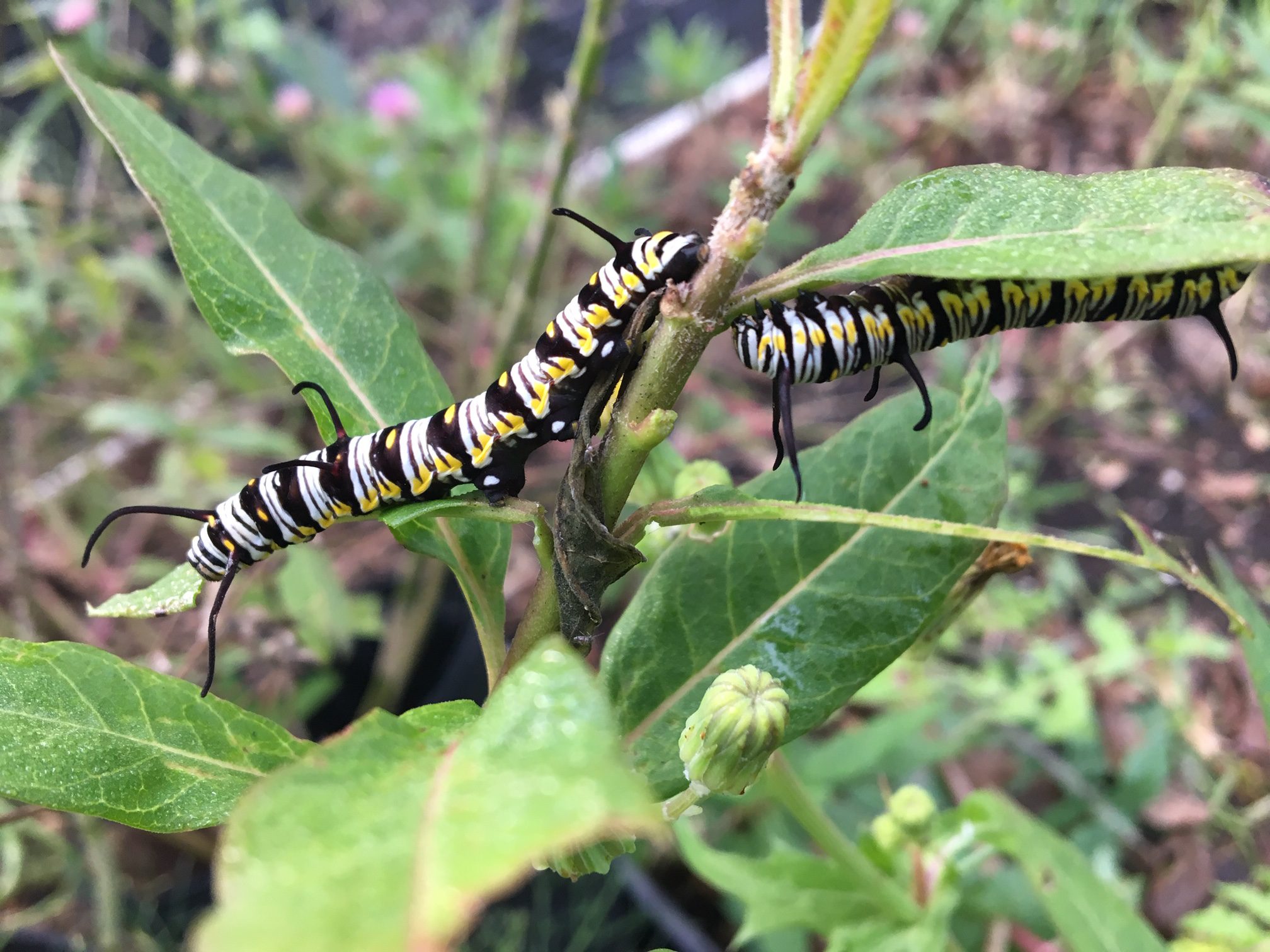

Although milkweed is known as “THE” plant for Monarchs, other caterpillars, such as these Queens, will take advantage of the food source as well. Learn how to distinguish Monarchs from Queens here.
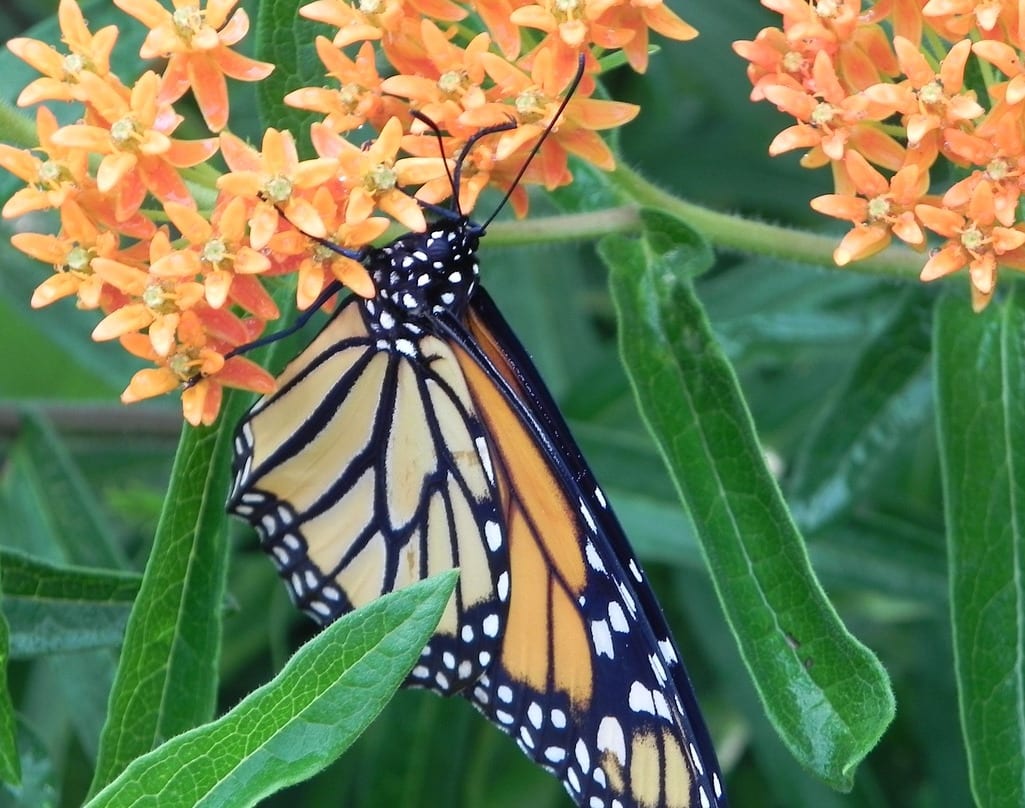
Monarchs seek out milkweed throughout their migratory path. Pictured is Tuberosa, also known as orange milkweed. Tropical milkweed is most easily obtained at garden nurseries, but we try to find as many types as we can!
2. Fennel/Dill/Parsley/Rue: I can’t tell you how many times we get a shipment of these herbs in the nursery only to find them covered in tiny Black Swallowtail eggs or larvae. It’s pretty amusing when a customer comes to warn us of the caterpillars that are eating up all our herbs and then watches as all the employees jostle each other to get to the plants so they can be the one to take home baby butterflies!
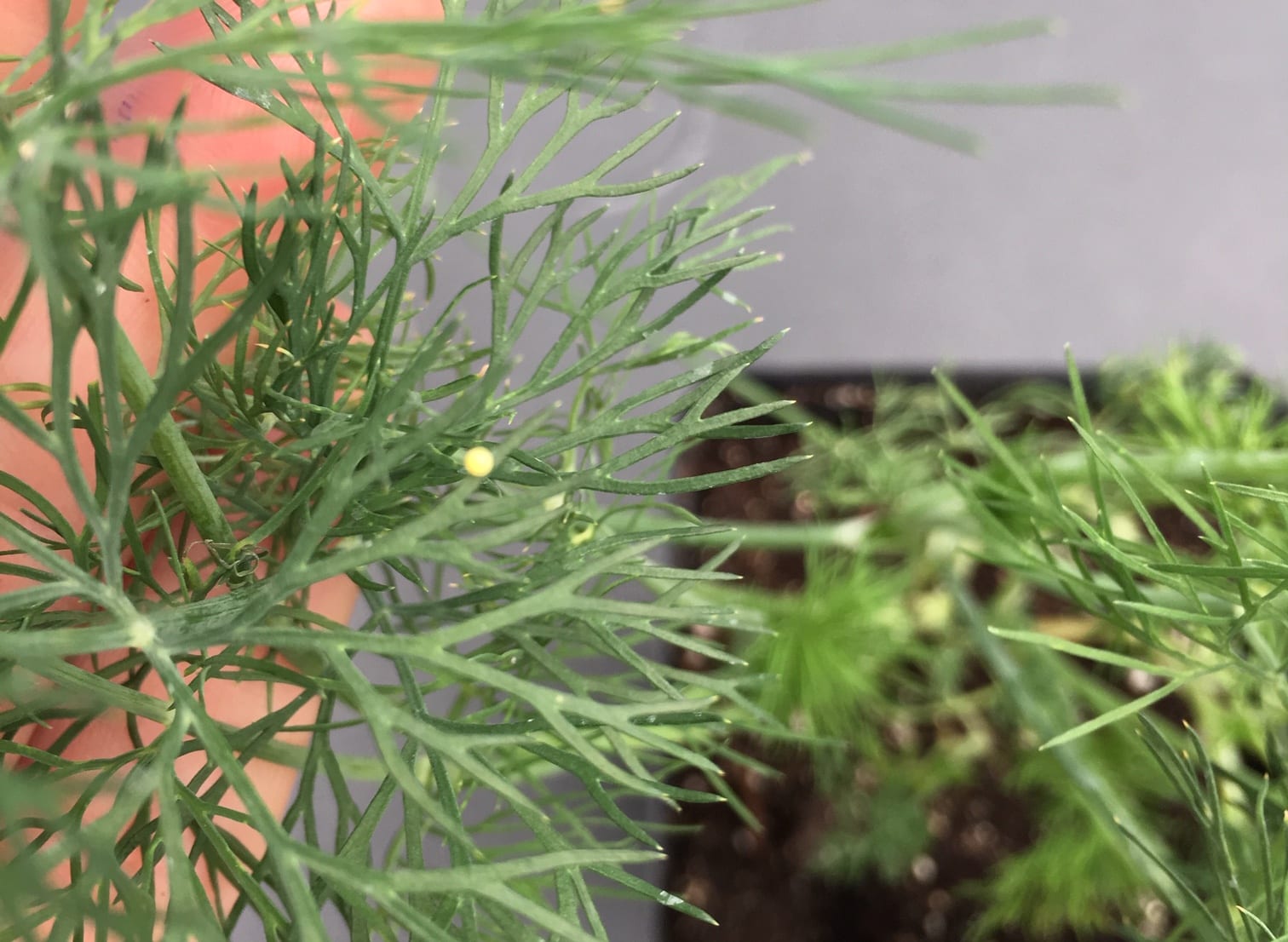

A few choice herbs and your culinary garden may double as butterfly and pollinator garden! Can you see the tiny cream-colored Swallowtail egg?


This is a common site in the herb section of our nurseries. Buy a few for you to use in the kitchen, and a few for the caterpillars.
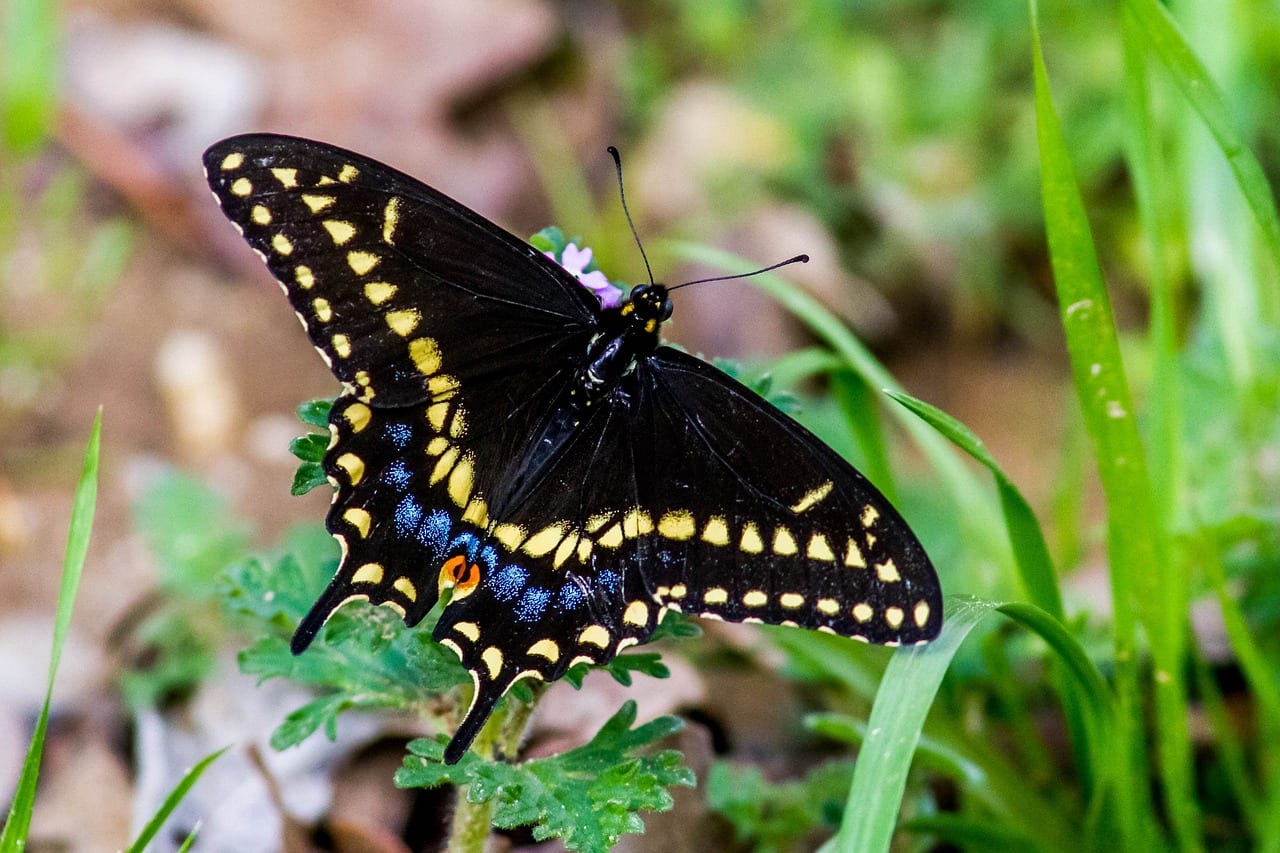

Black Swallowtail butterflies like the one pictured above search out herbs in the carrot family, like fennel, parsley, and dill, to lay their eggs upon.
3. Hummingbird Bush (Flame Acanthus): While this plant is known to be a huge hummingbird attractor, it also the host plant for the Crimson Patch butterfly. You may find these adorable, mint-green and brown striped caterpillars munching on the stems of your hummingbird bush in spring or summer, but no worries, this plant readily comes back year after year as it is a perennial and also self seeds very easily.
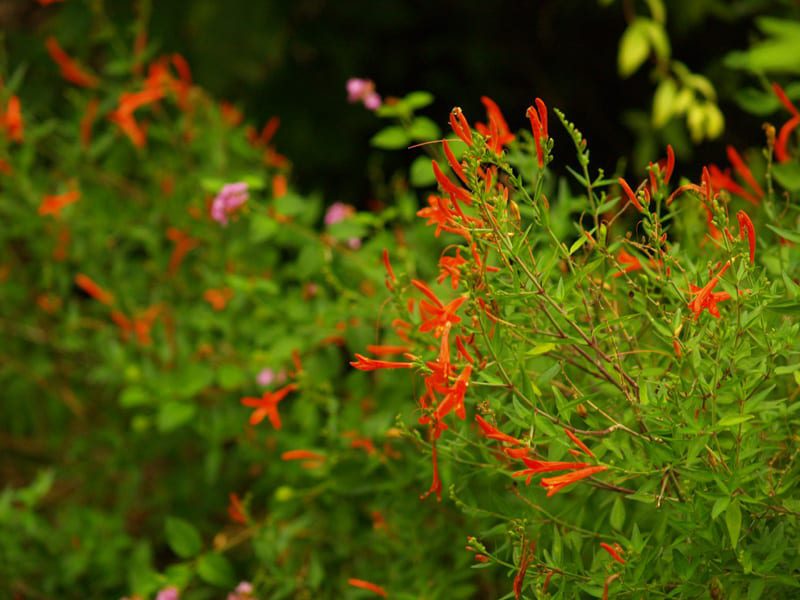

The hummingbirds have to share this plant with Crimson Patch butterflies, who lay many eggs at time.
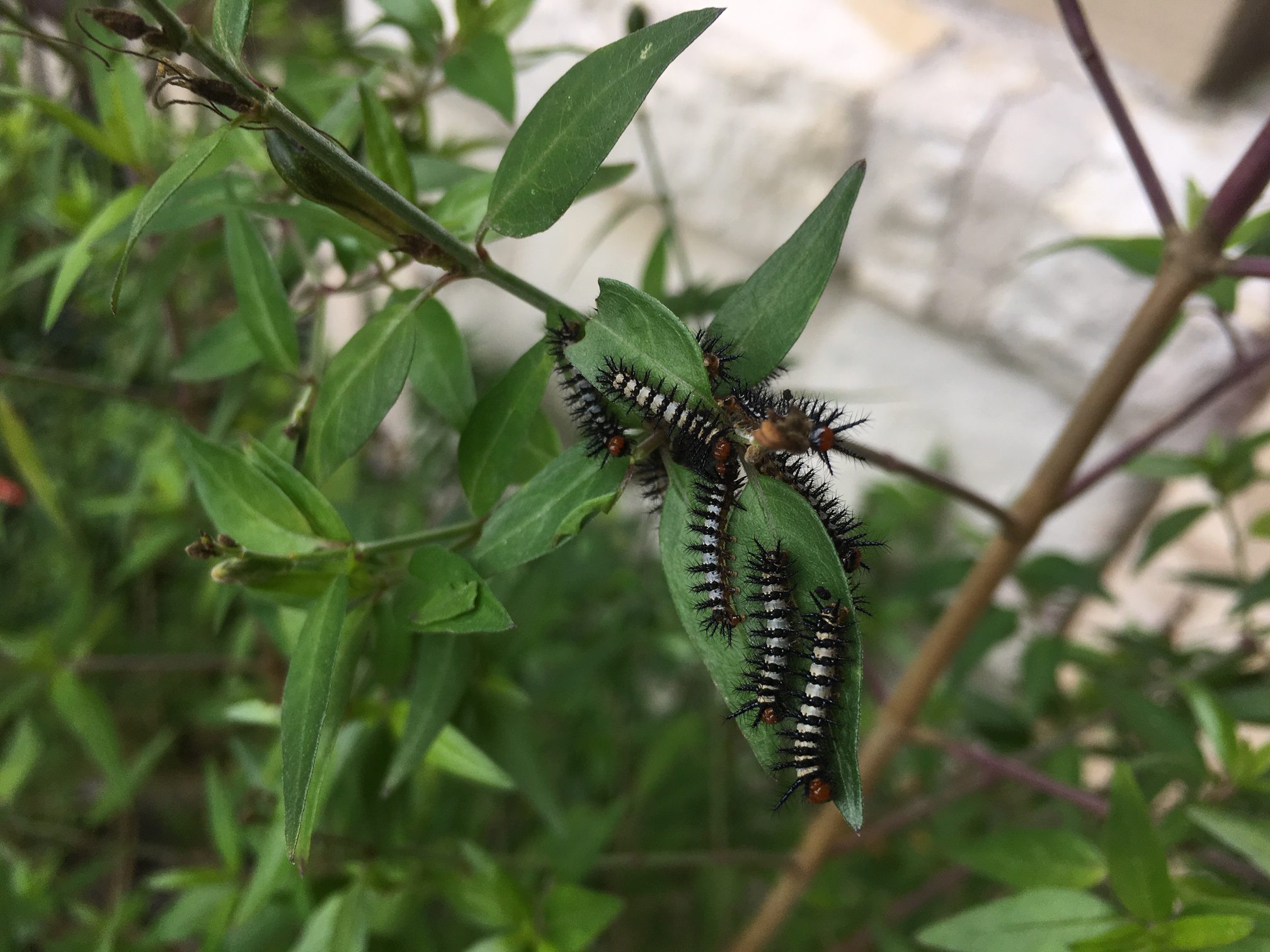

Look how incredibly cute these Crimson Patch caterpillars are! The leaves shown are only about an inch long, and these caterpillars will mow through them in no time!
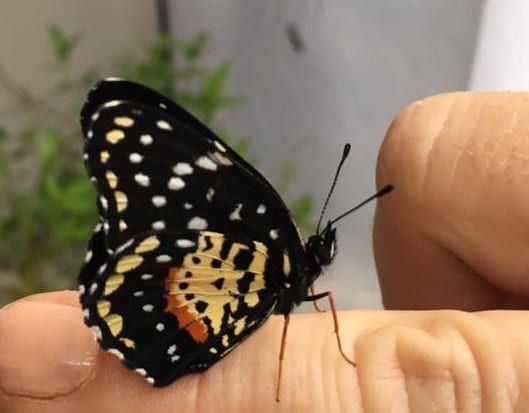

Who says Monarchs have to get all the glory? The Crimson Patch butterfly lays it’s eggs on Flame Acanthus, and easy, low-maintenance, drought-tolerant perennial.
4. Passionvine: The blooms on a passionvine are spectacular. And while these blooms deserve a spot in your garden based solely on appearance, they also provide nectar for numerous bees and butterflies! The foliage of the passionvine is host to many varieties of frittilary butterflies. Passionvine grows quickly, so no need to fret about the caterpillars stripping of the leaves, but you do need to make sure you have space for this vine to grow and stretch its legs.
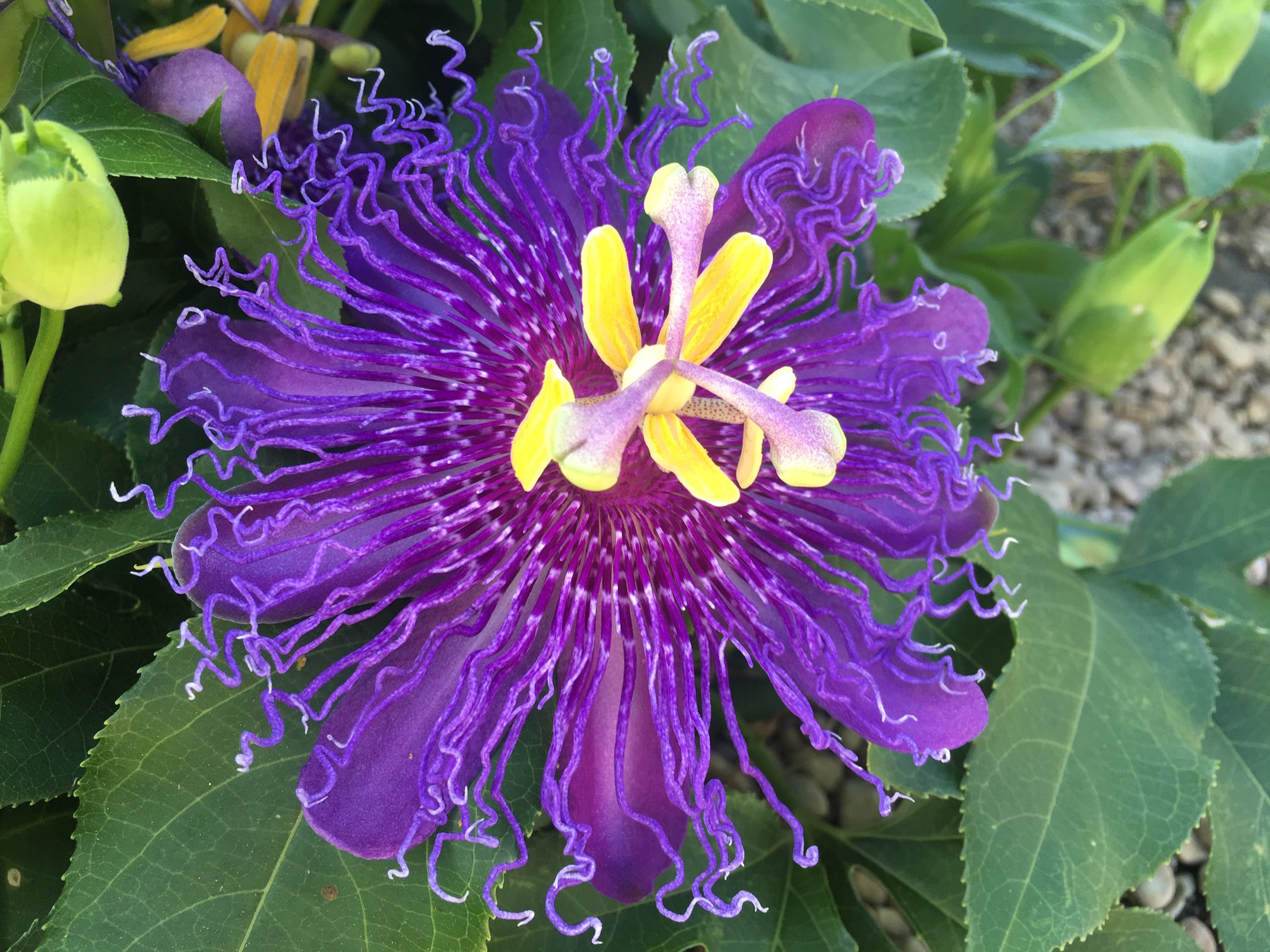

We aren’t the only ones who find the passionvine irresistable. Look for Gulf Fritillary and Variegated Fritllary butterflies to visit often.
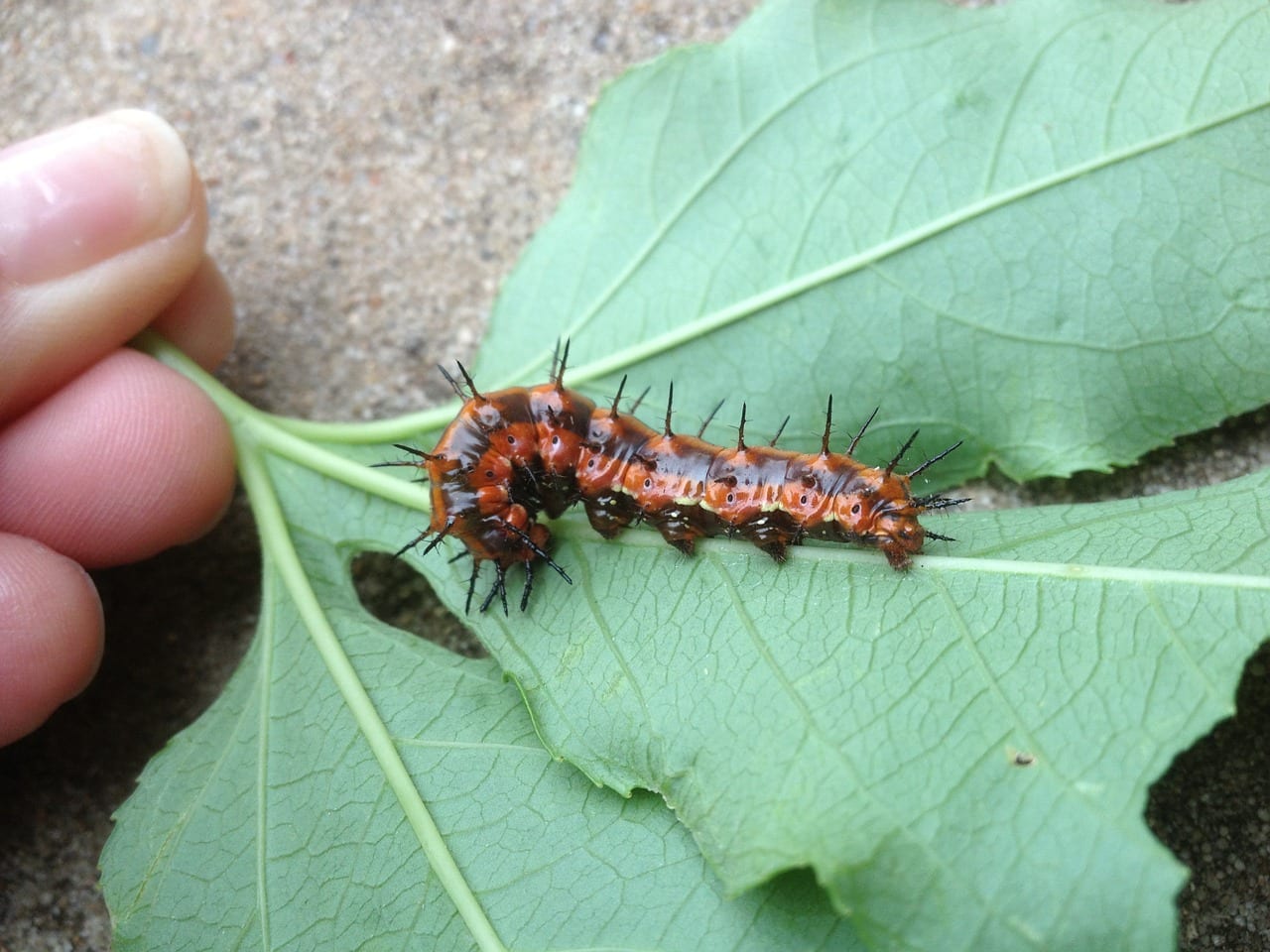

If you don’t look under the leaves, you might miss these crazy looking caterpillars!
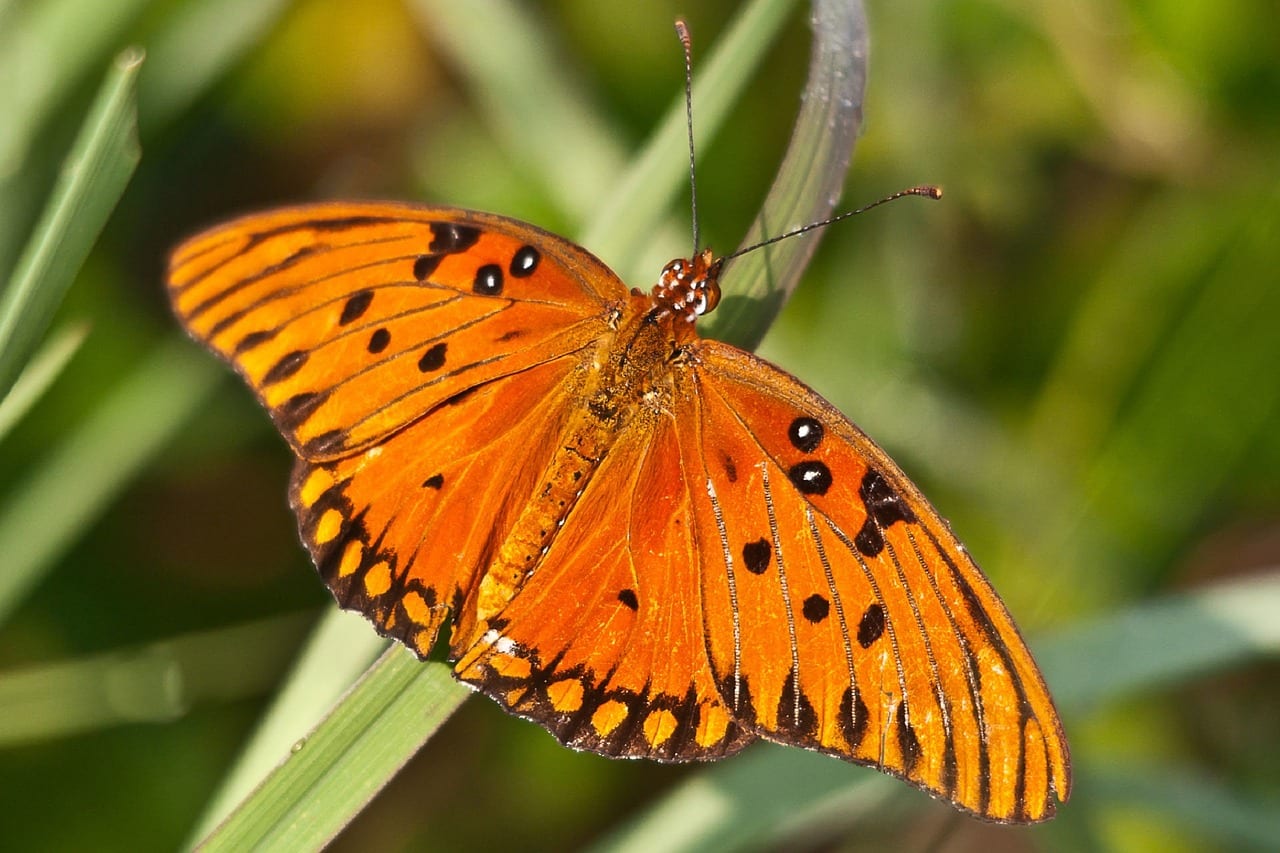

The passionvine is host to multiple varieties of frittilary butterflies. The passionvine is another double duty host and nectar plant
5. Sunflowers: Who doesn’t love a cheery sunflower? We have found sunflowers to be great bang-for-your-buck host plants. They serve as larval food for multiple varieties of butterflies (Bordered Patch and Painted Lady to name a couple) and also provide nectar (and seeds for birds). These sunshine-yellow flowers are easy to grow and thrive in our Texas heat. What butterfly wouldn’t make a beeline (pardon the pun) for sunflowers.


Who wouldn’t get excited about these happy flowers? Both you and the butterflies, as well as other pollinators, will enjoy all they have to offer you.
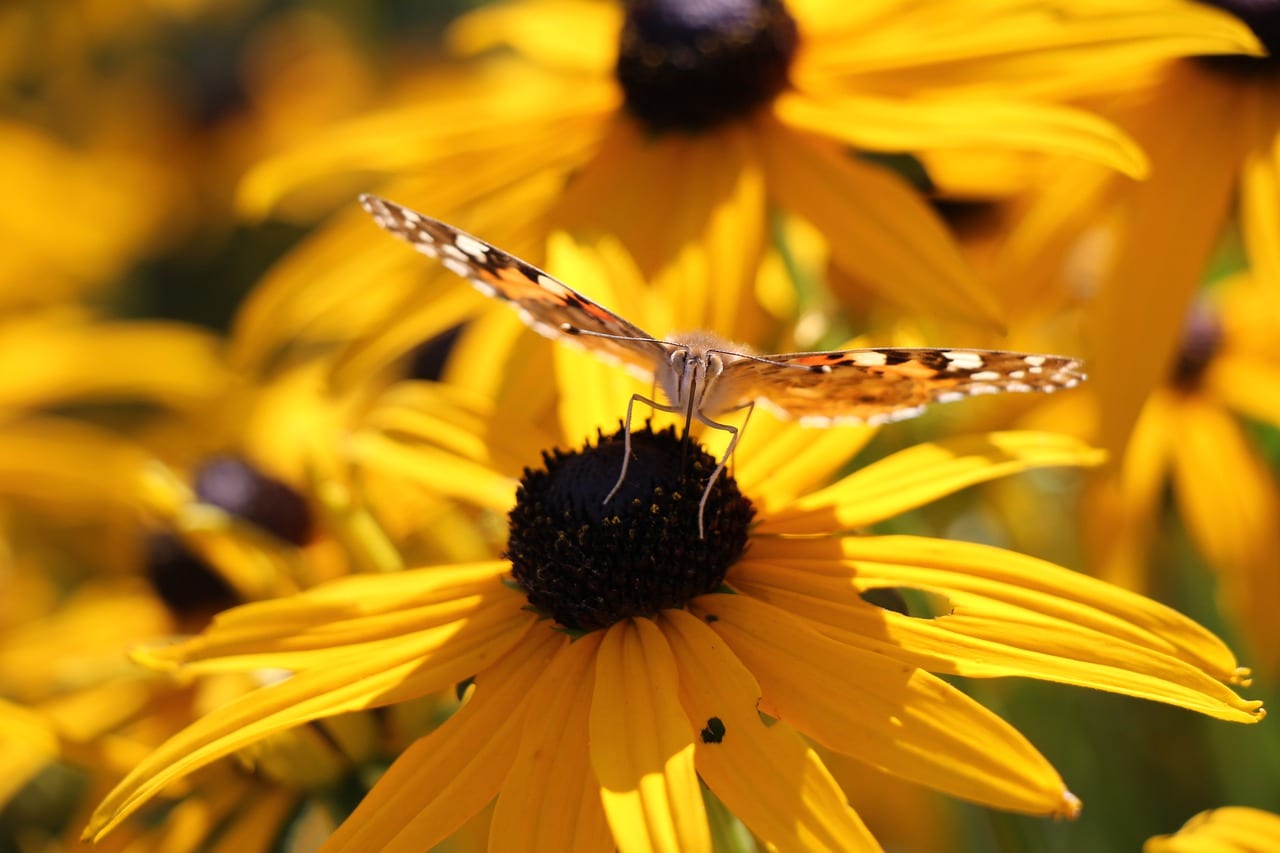

Painted ladies visit sunflowers for host plants, as well as other plants within the Aster family.
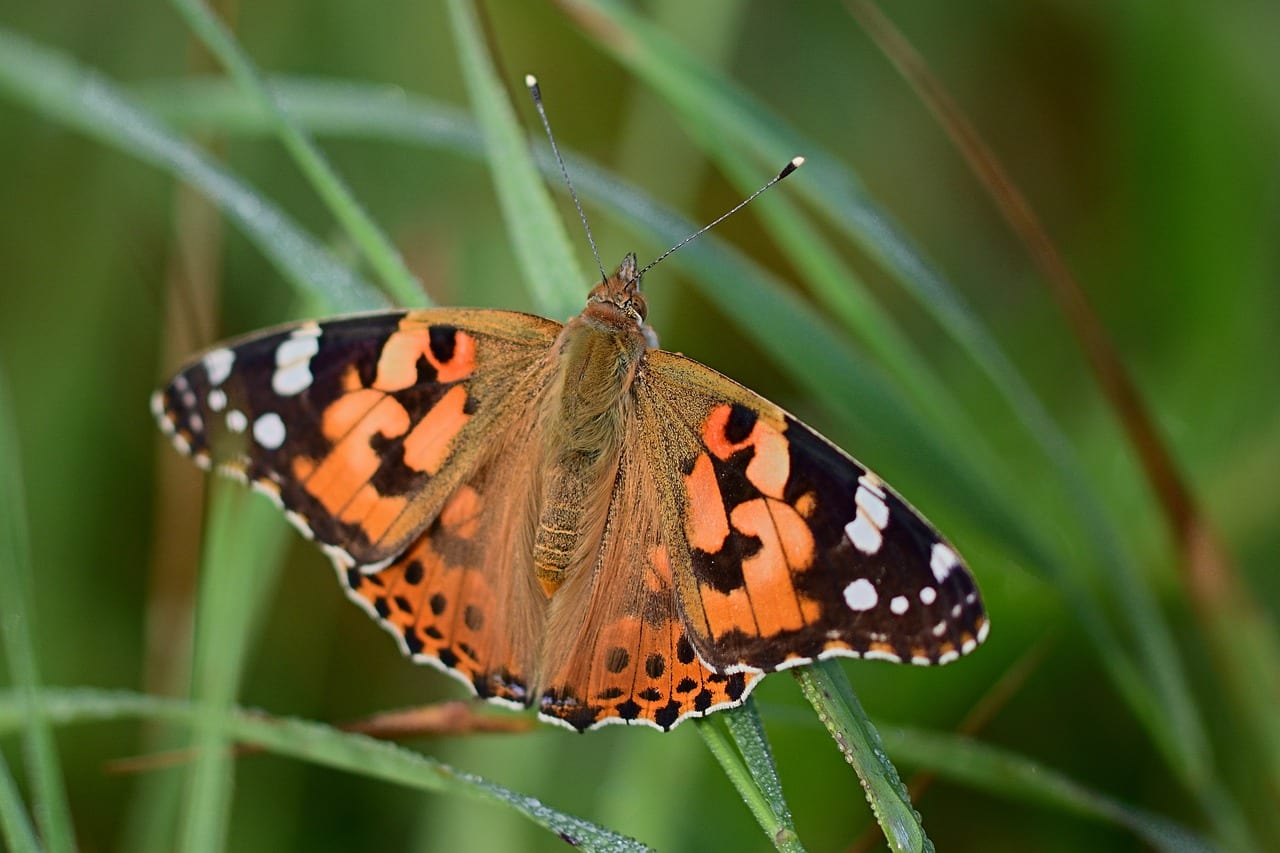

Painted ladies are common butterflies found all ofver the United States.
When it comes to host plants in the garden, remember that they are FOOD for the butterfly caterpillars and meant to be eaten. Any plant damage is just a slight inconvenience in the grand scheme of the wondrous lives of butterflies.
Please visit the following links for more host plant options, native nectar sources, and Rainbow Gardens’ favorite butterfly nectar plants. And make sure you join us for our October events centered all around pollinators! You’ll soon see, with all the beautiful choices available, it will be hard to come up with any excuse not to provide host and nectar plants for the butterflies.
~The Happy Gardener, Lisa Mulroy


My Peach tree is oozing out a lot of Sap , should I be concerned . What can I do about the Sap. Also my Peach tree didn’t give ant fruit this year .
It depends on the cause of the sap. It could be peach borers, bacterial canker, or gummosis disease. Can you take some pictures and send them to our contact us page. Look for holes in the tree and take pics of those and the sap. Have you seen any insects present?
Rose,
Also check out this info from TAMU agrilife extension.
https://aggie-horticulture.tamu.edu/archives/parsons/fruit/peach.html
Does rainbow garden offer native milkweed for sale?
Hi Ana,
We don’t currently have native milkweed in stock. It is something we do normally carry, but this is an unusual spring after the winter storm and many of our growers are about 3 weeks behind in getting plant material to us. Please check back often, calling our locations, as we are actively working with our vendors and growers and looking for more resources to bring in plants for our pollinators.